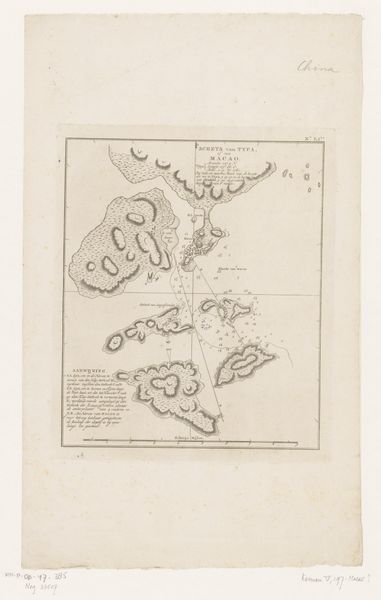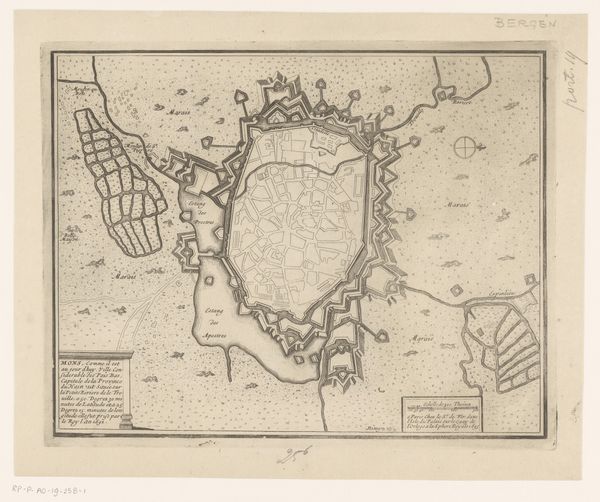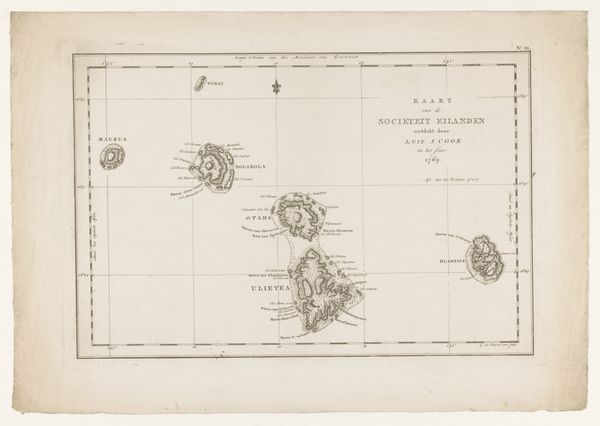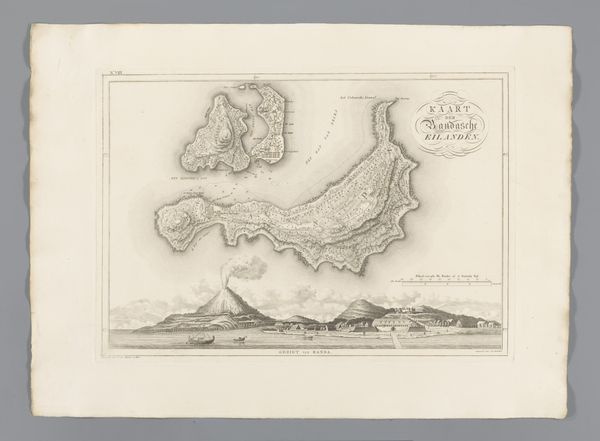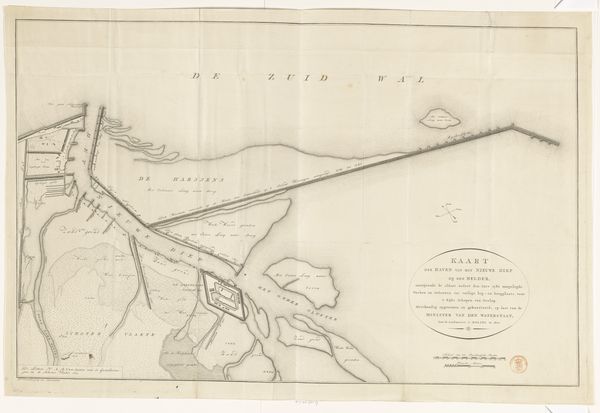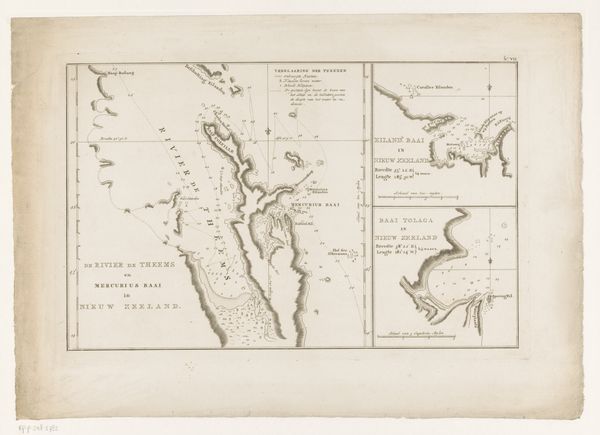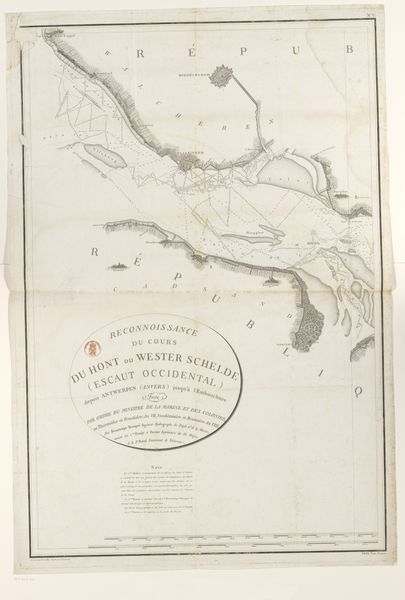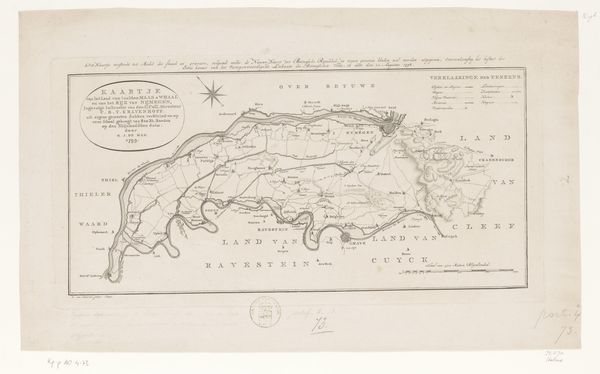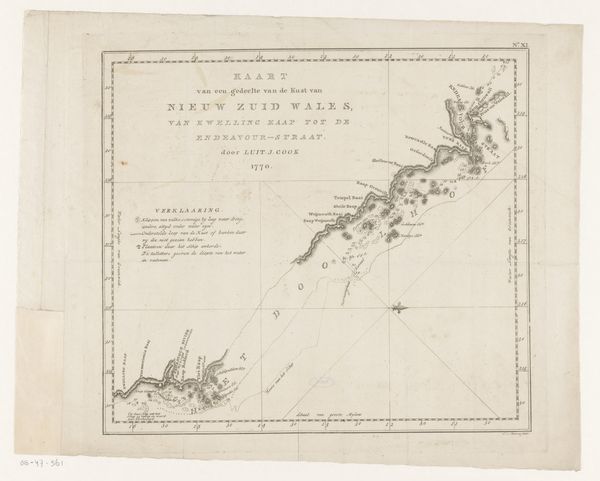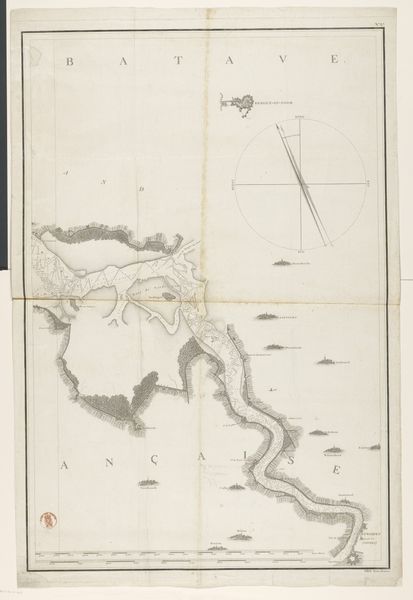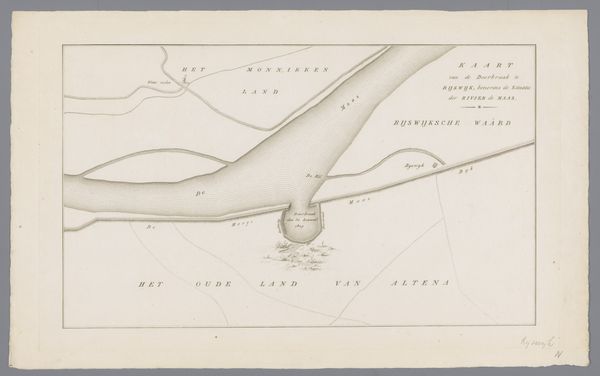
drawing, print, etching, paper
#
drawing
# print
#
etching
#
landscape
#
etching
#
paper
#
geometric
#
cityscape
Dimensions: 315 × 425 mm (plate); 420 × 555 mm (sheet)
Copyright: Public Domain
Curator: Looking at "A Correct Survey of the Bay of Dublin," made around 1795 by James Malton, I'm struck by its surprisingly stark aesthetic. A far cry from today’s detailed satellite imagery, isn’t it? Editor: Indeed. The overall feeling I get is one of aspiration, or maybe a very self-assured ambition. Despite being relatively spare, the image presents Dublin's bay as a site ripe for potential. It’s as though the artist captured not just geography but a whole future. Curator: The detail is compelling. Look how Malton contrasts areas; on one hand, you’ve got the intricate geometric planning of the city itself. The key references hint at the grid-like structure being imposed. On the other, the rest of the bay is portrayed more organically, a testament to untamed nature that’s almost Romantic. Editor: Do you think that duality was a conscious choice, an insight into the urban project as such? Curator: Certainly deliberate, given that Malton worked in the Picturesque style of urban documentation. One could even interpret the etching's delicate nature as a symbolic suggestion. Consider, how were these cityscapes used? I mean, were they purely functional or also tools in fostering civic pride? Editor: Well, printmaking then occupied a critical space for public education. You had city officials using these vistas to visualize Dublin's standing in the British Empire, but simultaneously shaping public opinion around what the city was meant to project – in trade, defense, refinement, etc. Curator: Which leads to another dimension—this survey aims to instill a certain perception of space, how one navigates and conceives place, and the bay seems almost anthropomorphized here, divided neatly, categorized… it speaks of mastery. Editor: Agreed, the print implies a kind of ordered ownership that's very typical of the period. But in today’s light, observing such surveys can make us more cognizant of the human drive to measure and claim authority. Curator: Absolutely, art like this enriches our engagement with cityscapes and reminds us to read the maps—and our own roles within them—critically. Editor: A poignant lens for considering Dublin's narrative and perhaps how cartography influences perception itself.
Comments
No comments
Be the first to comment and join the conversation on the ultimate creative platform.
